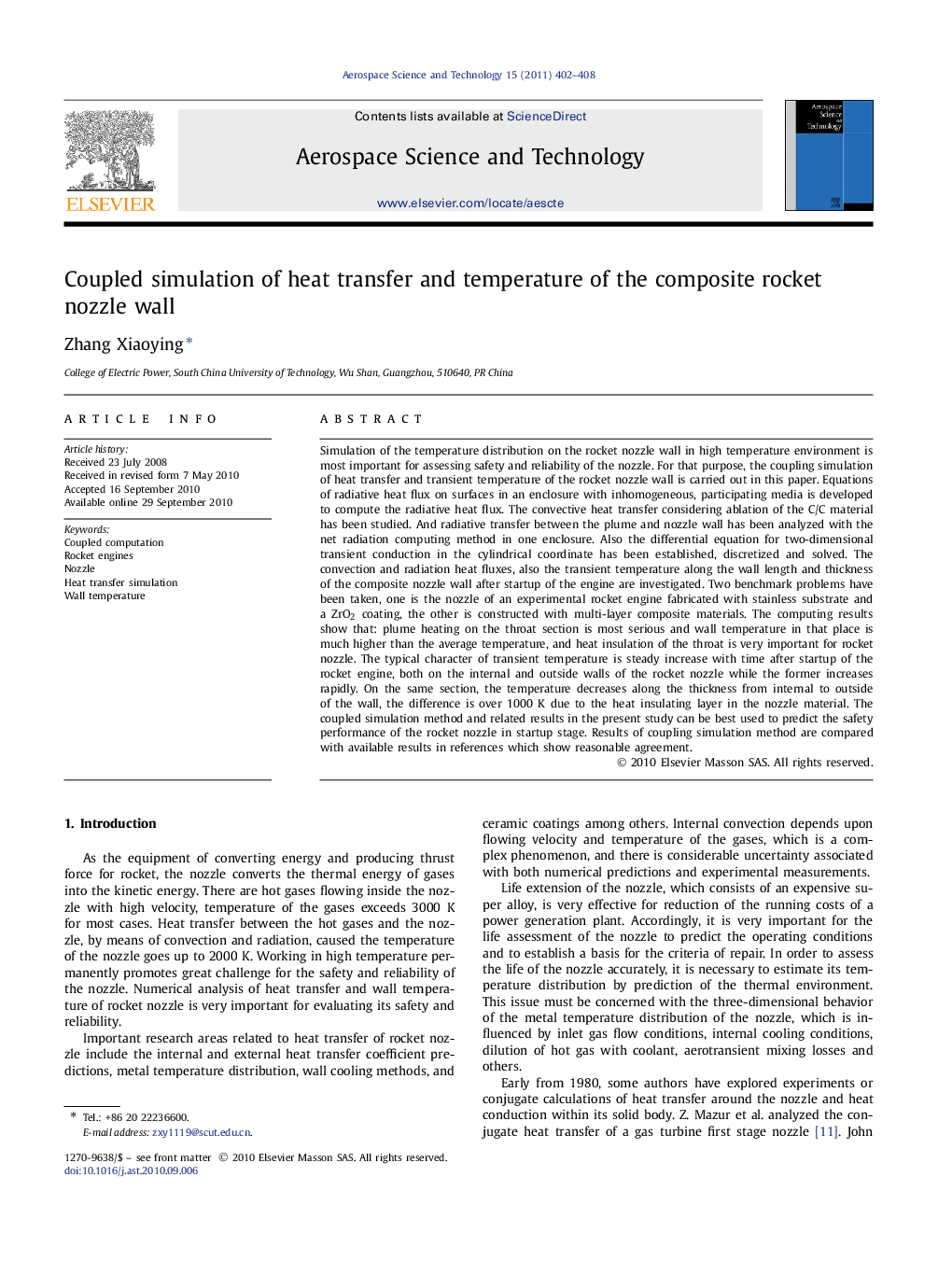| Article ID | Journal | Published Year | Pages | File Type |
|---|---|---|---|---|
| 1718674 | Aerospace Science and Technology | 2011 | 7 Pages |
Simulation of the temperature distribution on the rocket nozzle wall in high temperature environment is most important for assessing safety and reliability of the nozzle. For that purpose, the coupling simulation of heat transfer and transient temperature of the rocket nozzle wall is carried out in this paper. Equations of radiative heat flux on surfaces in an enclosure with inhomogeneous, participating media is developed to compute the radiative heat flux. The convective heat transfer considering ablation of the C/C material has been studied. And radiative transfer between the plume and nozzle wall has been analyzed with the net radiation computing method in one enclosure. Also the differential equation for two-dimensional transient conduction in the cylindrical coordinate has been established, discretized and solved. The convection and radiation heat fluxes, also the transient temperature along the wall length and thickness of the composite nozzle wall after startup of the engine are investigated. Two benchmark problems have been taken, one is the nozzle of an experimental rocket engine fabricated with stainless substrate and a ZrO2 coating, the other is constructed with multi-layer composite materials. The computing results show that: plume heating on the throat section is most serious and wall temperature in that place is much higher than the average temperature, and heat insulation of the throat is very important for rocket nozzle. The typical character of transient temperature is steady increase with time after startup of the rocket engine, both on the internal and outside walls of the rocket nozzle while the former increases rapidly. On the same section, the temperature decreases along the thickness from internal to outside of the wall, the difference is over 1000 K due to the heat insulating layer in the nozzle material. The coupled simulation method and related results in the present study can be best used to predict the safety performance of the rocket nozzle in startup stage. Results of coupling simulation method are compared with available results in references which show reasonable agreement.
